The graphics tool is truly cross-platform, so you may use it on Windows, macOS, or Linux devices. The minimal system requirements for running Blender on a laptop are surprisingly low: a 64-bit CPU, 8GB RAM, a full HD display, and a graphics card with at least 2 GB of VRAM and OpenGL 4.3 support.
However, for optimal performance, we strongly recommend selecting a laptop with significantly higher internal components – the best gaming laptops are typically a solid starting point.
To assist you in selecting the ideal equipment for your next animation job, we’ve tested the best laptops for Blender. As part of our thorough evaluation, we examined internal specifications, focusing on graphics, build quality, overall performance, and cost. Here is the list of best laptop for blenders.
Top 7 Laptops for Blenders

If you enjoy 3D modeling, you might use programs like 3D Max, Auto CAD, or Blender. All of them are powerful enough to overload the CPU. That is why you should select a model with a high-performance GPU to distribute CPU and RAM tasks for smooth, lag-free operation. i7 laptops are powerful enough to handle such demanding software. Regardless of which model you choose in this price range, you will undoubtedly receive superior performance and capabilities compared to standard laptops. So, continue reading to get the best laptop for Blender that works for you.
HP Omen
CPU: Intel 13th Gen Core i7-13700HX | GPU: NVIDIA GeForce RTX 4060 GPU | RAM: 8GB | Storage: 2TB SSD | Display: 16.1″ | Weight: 5.4 lbs
Features:
- Solid performance
- RGB illuminated keyboard
- Additional M.2 SSD slot
- Numerous ports
- Mushy touchpad
- 720p webcam
The HP OMEN is equipped with fast CPUs and discrete NVIDIA GPUs, giving ample processing capacity to tackle demanding applications such as movie editing and 3D graphics. The 16.1-inch display has a large bezel on the bottom; a higher 16:10 screen may have helped minimize this.
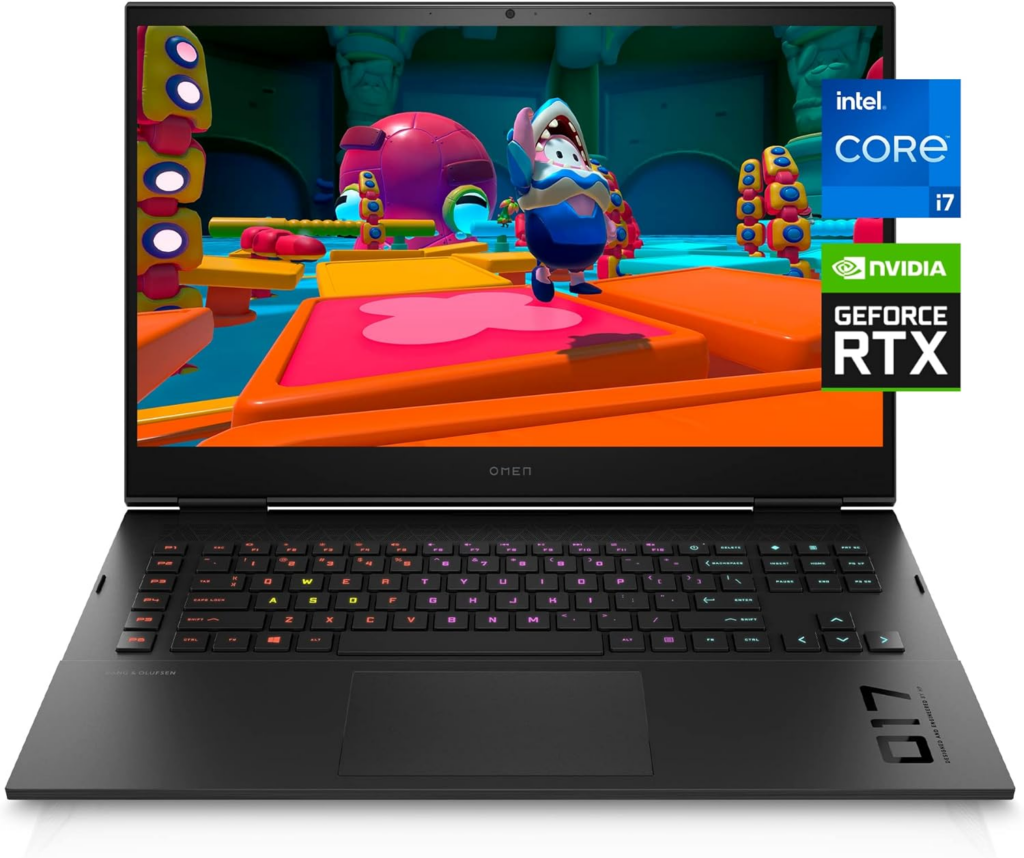
It includes a large number of connectors as well as user-upgradable RAM and storage. The RGB keyboard allows you to express as much or as little personality as you choose. A high resolution and quick refresh rate display allow you to expand your 3D modelling environment by providing crisper and smoother visual experiences.
Asus ZenBook Pro Duo
CPU: Intel Core i7-9750H | GPU: NVIDIA GeForce RTX 2060 | RAM: 16GB | Storage: 1TB | Display: 15.6″ | Weight: 5.5 lbs
Features:
- Two-screen laptop
- High-quality keyboard
- Impressively powerful
- Stunning 4K OLED display
- Battery life lasts 3 to 3.5 hours
The Zenbook Pro Duo UX581 is not a laptop for budget-conscious shoppers. However, if money is no object, this model with two displays will provide a whole distinct user experience, particularly if you are looking for a laptop for 3D modeling and rendering. According to the makers, the Zenbook Pro Duo UX581 is a laptop for the future. While it may appear excessive, it could be a preview of what we will see on the market in the next years. Aside from a first-class 4K OLED screen, high-quality keyboard, and trackpad, this model has a plethora of handy features that you will adore.
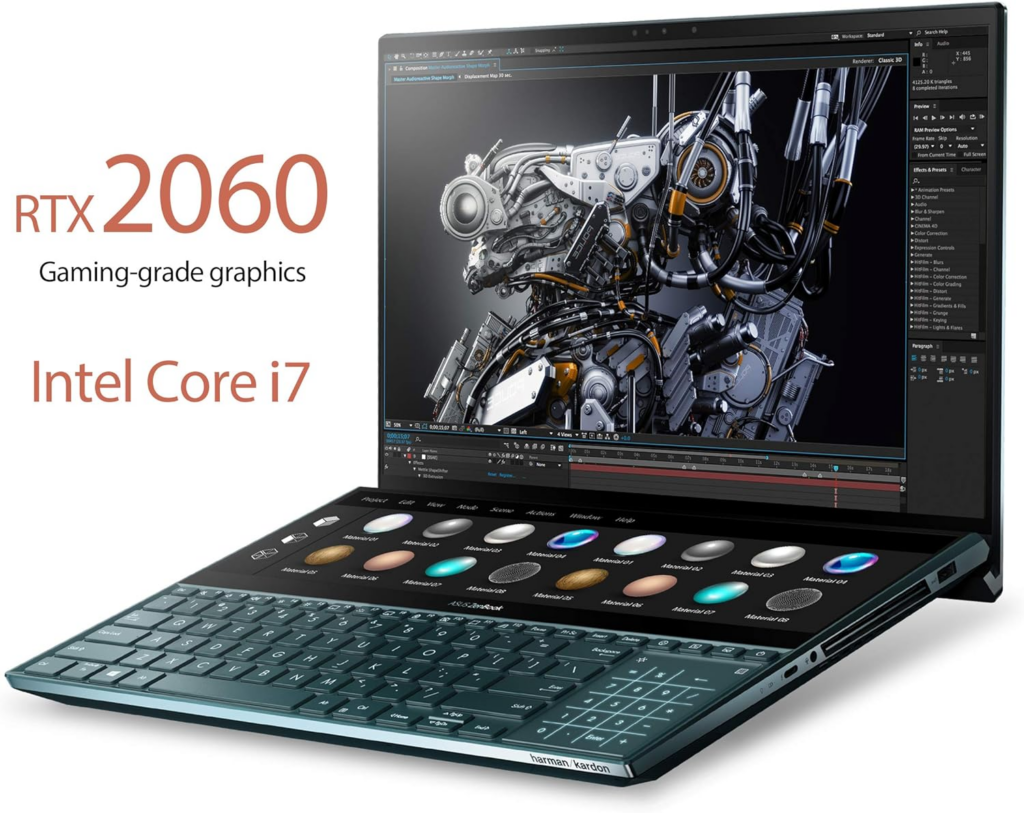
However, the second screen frequently falls short of its potential, and the entire experience is prohibitively expensive. The Zenbook Pro Duo UX581 features a 15.6-inch 4K OLED touch-sensitive display characteristic of laptops, as well as a secondary 14-inch screen above the keyboard. It is a good choice for digital artists looking to maximize screen real estate.
Lenovo Flex
CPU: AMD Ryzen 5 4500U | GPU: AMD Radeon RX Vega 6 | RAM: 16GB | Storage: 256GB | Display: 14″ | Weight: 3.63 lbs
Features:
- Reliable performance and value for money
- Durable, soft-touch chassis
- Touchscreen Two USB-A ports
- Heavy for a 14-inch ultraportable laptop
- The screen’s maximum brightness is barely 250 nits
While costing only $600, this convertible laptop outperforms many more expensive models. Aside from its numerous connectivity choices, the Lenovo Flex offers a sturdy design and a high-quality keyboard. While its 14-inch display could be brighter and the construction lighter, it is a popular laptop that provides good value for money.

Lenovo IdeaPad Flex 5 is a low-cost notebook for Blender that features a powerful AMD processor. It is an amazingly fast machine with build quality that well justifies its price. You won’t find a laptop with a 256 GB PCIe SSD and 16 GB of RAM at such a low price. If you’re looking for a low-cost but capable laptop, the Lenovo Flex is well worth considering. If you’re looking for a low-cost but capable laptop, the Lenovo Flex is well worth considering.
HP Pavilion
CPU: Intel Core i7-1065G7 | GPU: Intel Iris Plus Graphics G7 | RAM: 16GB | Storage: 512GB | Display: 15-inch | Weight: 4.08 pound
Features:
- Excellent price-performance ratio
- Stylish design
- Impressive performance
- Responsive keyboard
- Screen is not bright enough
- Just one USB-C port
HP 15-cs3019nr combines various beneficial features that are uncommon in rendering laptops in this price range. It merits credit for its architecture, but its overall performance falls short when it comes to complex multi-core tasks. Nonetheless, this HP model provides adequate performance for a laptop for under $1,000. The laptop is lightweight but robust.

The aluminum body is both attractive and strong, and it will undoubtedly resist daily crashes. The keyboard’s keys feel tactile and solid, and the arrangement is comfortable.
The HP 15-cs3019nr is a tempting productivity solution thanks to its advanced features and great portability. The 16 GB of RAM and 10th Generation i7 processor are excellent laptop specifications. An Ethernet jack is a welcome addition.
Acer Nitro
CPU: 9th Gen Intel Core i7-9750H | GPU: NVIDIA GeForce RTX 2060 | RAM: 16GB | Storage: 256GB | Display: 15.6-inch | Weight: 7.68 pound
Features:
- High-quality keyboard
- Affordable
- Long-lasting battery
- Awkward design
- Poor performance
- The screen exhibits dull colors
The Acer Nitro 5 features a Full HD IPS display with a refresh rate of 144Hz, good viewing angles, improved contrast ratio, and adequate sRGB coverage. Furthermore, it does not use pulse-width modulation to adjust screen brightness and can achieve optimal color accuracy by using the Web design profile. The keyboard includes a red lighting, which may be a drawback for some users. The good news is that you can change the backlight brightness.
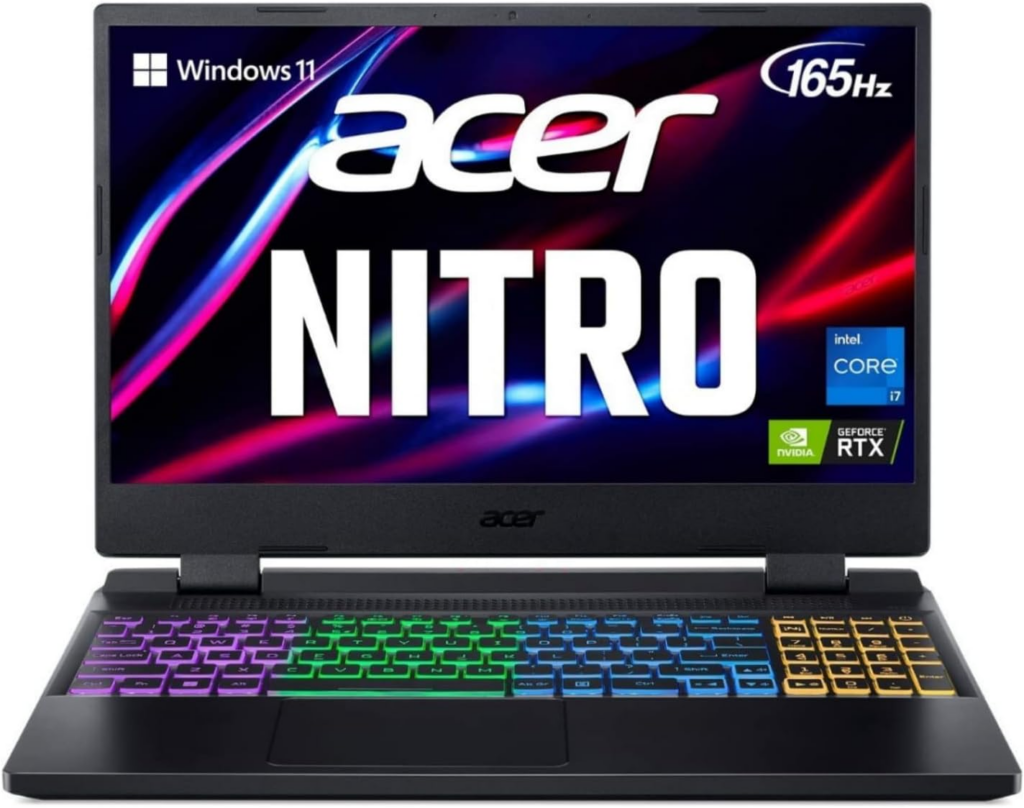
Another advantage of this laptop for Blender is the ability to upgrade the SSD storage and memory. Thus, you can significantly increase your productivity. This model boasts a well-executed design and high construction quality. It features an upgraded cooling system and two exhaust ports for a smooth and trouble-free operation. Overall, the Acer Nitro 5 provides impressive capabilities in a small package.
ASUS ZenBook
CPU: 8th-Gen Intel Core i7-8565U | GPU: Intel HD Graphics 620 | RAM: 16GB | Storage: 512GB | Display: 13.3-inch | Weight: 2.6 pound
Features:
- Excellent CPU performance
- Rating Reasonably priced.
- Long-lasting battery
- Touchpad issues
- Poor screen brightness
Apart from being competitively priced, this ultrabook features extremely compact proportions. ASUS ZenBook is a powerful laptop designed for 3D modeling and graphics. This is exactly the instance where well-executed hardware is complemented by beautiful design. However, it has significant disadvantages. The keyboard seems cramped, so you may encounter some typing difficulties. The touchpad was also badly designed. However, you can utilize a third-party mouse to make your task easier.
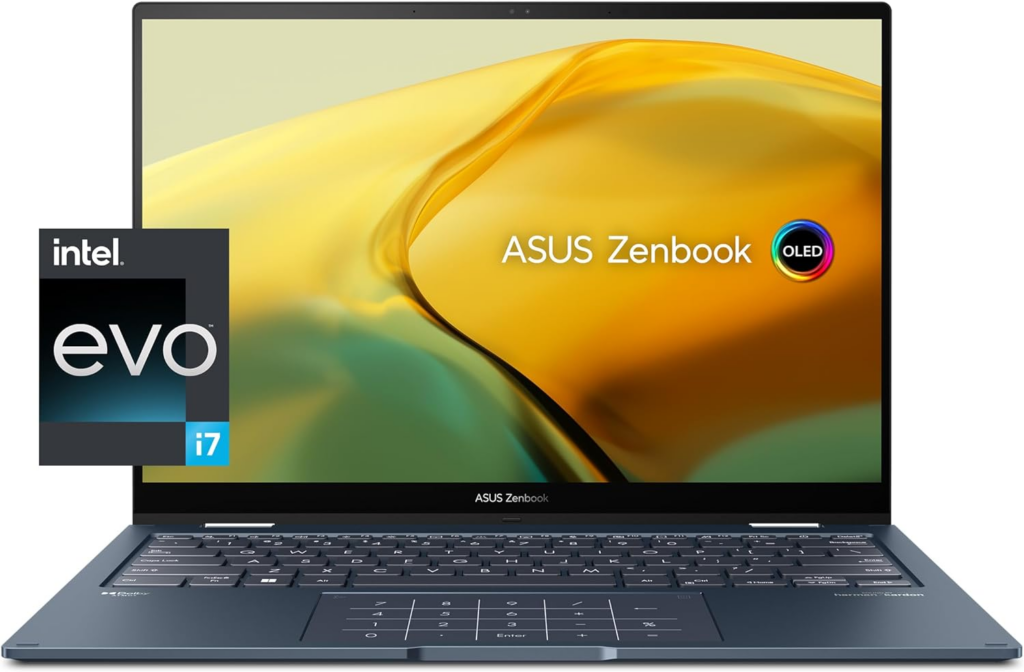
ASUS ZenBook encrypts your data with a TPM security chip, which is particularly handy for CAD users who want to keep their designs secure. Aside from the performance, advanced features, and well-thought-out design, this laptop has a high-end appearance. The manufacturer has significantly improved this model by providing it with minor but major enhancements.
It is the same traditional and dependable machine, but it appears more fashionable, smart, and surely improved. Even though it is slightly more expensive than its predecessors, you will receive an outstanding laptop with many advantages and a few disadvantages. Furthermore, it will meet the needs of a diverse range of users.
Acer Predator
CPU: Intel Core i7-9750H | GPU: GeForce GTX 1660 Ti | RAM: 16GB | Storage: 512GB | Display: 15.6-inch | Weight: 5.29 pound
Features:
- Excellent screen quality
- Excellent value for money
- Durable construction.
- Redesigned thermal implementation
- Weak, thick, and hefty body
- Lacks SD card reader and Thunderbolt 3
- Comes with a 58Wh battery.
If you’re looking for the best laptop for Blender, consider the Acer Predator Helios 300. It includes the NVIDIA GeForce GTX 1660 Ti graphics card, a high-quality display, and other equally necessary features. The Full-HD 144Hz screen provides a more immersive user experience, with smooth action, vibrant colors, and improved contrast and brightness.
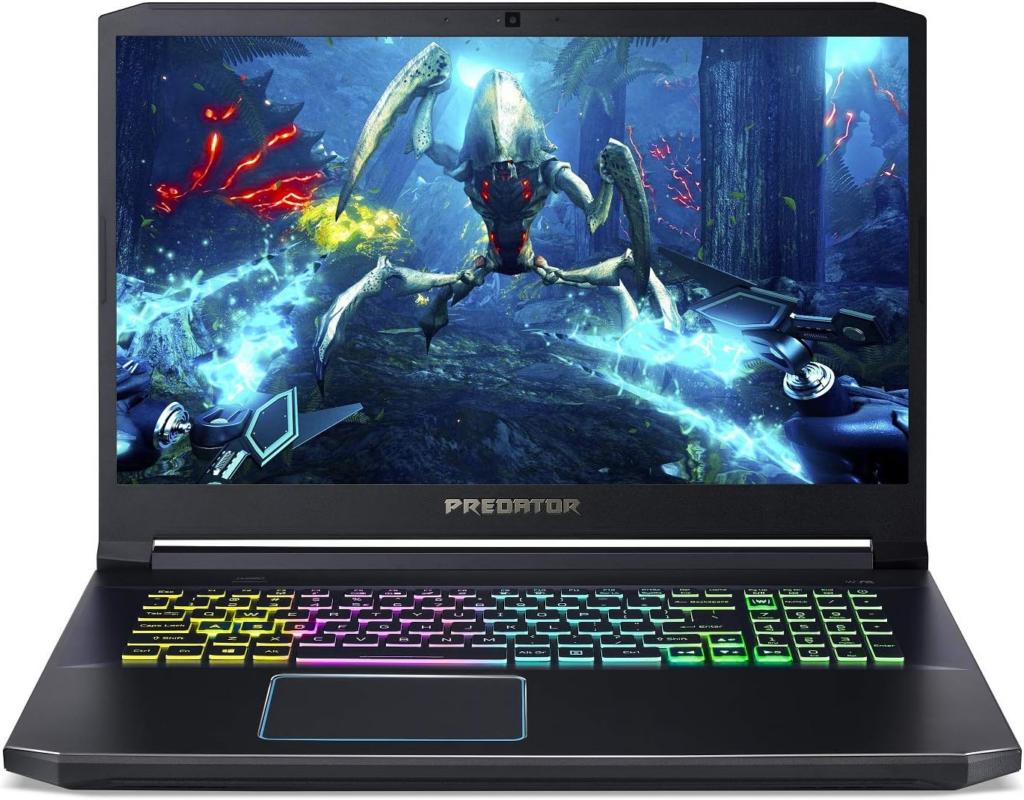
However, you can notice backlight bleeding at the top of the screen. The battery only lasts long enough to view one movie. Currently, the Helios 300 provides a full package for this price range, competing effectively with mid-range laptops priced at up to $2,000 rather than $1,000. While this is on the higher end of what I would consider a budget offer, it is the best value for budget gaming if you have some additional cash.
How Do I Choose the Best Laptop for Blender?
Blender is a powerful software with 3D modelling, animation, and rendering capabilities. A laptop for Blender is a good solution for those who value portability. Still, in order to achieve peak performance and fully utilize Blender’s capabilities, you must select a laptop capable of meeting its rigorous needs. These machines, like the best laptops for animation, are often designed to be graphics powerhouses capable of handling resource-intensive applications. Here are the essential variables to consider when selecting a laptop for working with Blender.
Processor
The processor (or CPU) is one of the most important considerations when looking for the best laptop for Blender. It is vital to consider models with fast CPUs. Blender is a demanding piece of software that necessitates the use of several processor cores. The next-generation Intel Core i7 with six cores is a good choice for 3D modelling. However, not all i7 processors feature six cores.
The ones labelled U have fewer cores. For example, the i7-8550U has four cores, but the i7-7500U has only two. The current 8th Generation U series is also an excellent pick. Nonetheless, if you want to get the most out of your laptop, choose a model with a processor ending in H, such as a Hexa-core i7-9750H.
Graphics Card
The graphics card (or GPU) accelerates the process of 3D modeling. The bulk of 3D rendering programs have already implemented GPU acceleration. Blender provides acceleration for specific workloads, which can be up to ten times faster than CPU rendering.
If you intend to use Blender, it is advised that you obtain a laptop with a powerful graphics card, such as a GTX 1660 Ti. Laptops rarely allow you to update their GPUs, so it’s best to future-proof your build with a powerful GPU.
Screen
A high-definition display is another important consideration when buying for a laptop for 3D modelling and rendering. To build a decent project, consider the color palette, brightness, contrast, and HD resolution. Choose a 15-inch laptop for additional screen real estate. You should choose a touchscreen laptop that is reasonably priced and has the functionality you require.
RAM
The amount of RAM and storage memory are equally important considerations before making a purchase. Working with demanding applications necessitates a lot of RAM. The last thing you want is to get behind in work due to constant lags. Consider a laptop with a minimum RAM of 8 GB, preferably 16 GB. In this situation, you will not have to worry about your computer’s bad performance.
Choose a hard drive with a good capacity. You’ll most likely be working with large files, so make sure you have adequate capacity to save all of your projects. That is why it is preferable to purchase a good SSD laptop (256 GB SSD) or one with a 1 TB HDD. If you are considering a laptop with less memory, look for one with a built-in memory card slot.
Storage
Invest on a laptop with an SSD for quick file access and project load times. Benefits of Blenders: Blender takes advantage of solid-state discs’ fast read and write rates. An SSD provides faster data access, shorter file load times, and application launches, resulting in a more efficient workflow in Blender. If you need more storage capacity, consider coupling an SSD with a supplementary hard disc drive (HDD).
Display considerations
A larger screen size increases workspace and enhances the overall user experience. Look for a screen size that works well for your workflow, and consider a high-resolution display (1920×1080 or more) for precise details work. Select a laptop with a color-accurate display for precise rendering and consistent color representation; opt for models with a wide color range to ensure rich and lifelike pictures.
Cooling System
Blender rendering and complicated simulations can put a lot of strain on the laptop’s hardware, causing it to heat up. To maintain peak performance and avoid overheating, consider a laptop with an efficient cooling system that properly dissipates heat. Adequate ventilation and excellent cooling technologies will ensure that your laptop runs smoothly during demanding Blender work.
Ports
The type of ports on your laptop is also crucial, as you want to ensure that they are appropriate for your needs. If you’re only utilizing it for rendering, any port will suffice. However, if you’re working with video, be sure it includes an HDMI port so you can connect it to a monitor or television. You’ll also want to ensure that it has adequate USB ports for your needs. Most laptops include at least two USB ports; however, if you require more, opt for a laptop with three or four USB ports.
The USB type-C port is also becoming more popular, and it is an excellent port to have. One of the most significant features to look for in a laptop for Blender is a Thunderbolt 4 port. Thunderbolt is a high-speed connector that can be utilized for several purposes, including connecting to an external GPU. If you are serious about utilizing Blender, make sure your laptop has a Thunderbolt port.
Wireless connectivity
You should also make sure that your laptop has the essential wireless connectivity options. You should have at least 802.11ax Wi-Fi, which will provide quicker data transfer speeds and a more reliable connection overall.
Bluetooth is another handy option for Blender users; if your laptop supports it, you may connect various devices such as headsets and keyboards without issue.
WI-FI 6E is the most recent edition of the WI-FI standard, with numerous enhancements over prior versions.
It features quicker data transmission speeds, longer range, and greater bandwidth capacity than ever before. So, if you’re looking for a laptop suitable for Blender, make sure it has WI-FI 6E capability.
Portability
Another item to consider is the portability of your laptop. If you need a portable computer, choose one that is lightweight and has a small form factor.
This is less crucial for Blender users than it is for those who need to use other programs, but it is still something to consider.
Battery life is an important consideration when purchasing devices. You’ll want a laptop that can run for at least five hours on a single charge, so you can work on projects without worrying about locating an outlet.
Frequently Asked Questions (FAQs)
How much RAM does a laptop need to run Blender?
Blender may consume up to 16 TB (64-bit) of virtual memory. The operating system must offer adequate RAM for Blender. When you deal with a paging file, it starts at around 2 GB or 4 GB, and Windows will increase it as needed. However, this software may require considerably more RAM.
Does Blender require an external GPU?
There is no requirement for an external graphics card. Blender’s main functionality is not heavily reliant on a full-fledged GPU, save for drawing and using the 3D Viewport features.
Do you need a nice laptop for Blender?
Blender, a free and open-source 3D modeling software, has outstanding features and capabilities. This is why weak, lightweight computers cannot handle it. To avoid software troubles, you will need a powerful laptop with enough of RAM and a high-performance GPU.
How many cores can Blender use?
To boost your computer’s performance, use complex software like Blender, and play games, get the AMD FX 8150 Black Box 8 Core CPU.
Which laptops are compatible with Blender?
The easiest method to ensure that your laptop can run Blender is to first review the company’s minimum requirements. Even if your laptop meets the minimum hardware requirements, it’s advised to upgrade to a computer that exceeds them; this will ensure that the resource-intensive animation app operates smoothly at all times.





